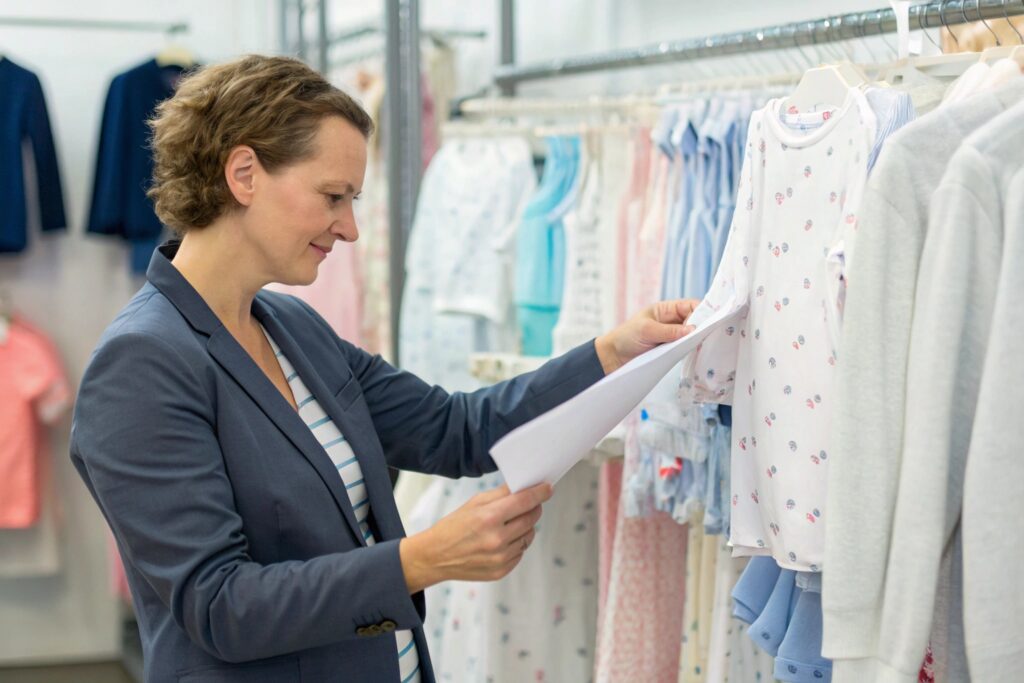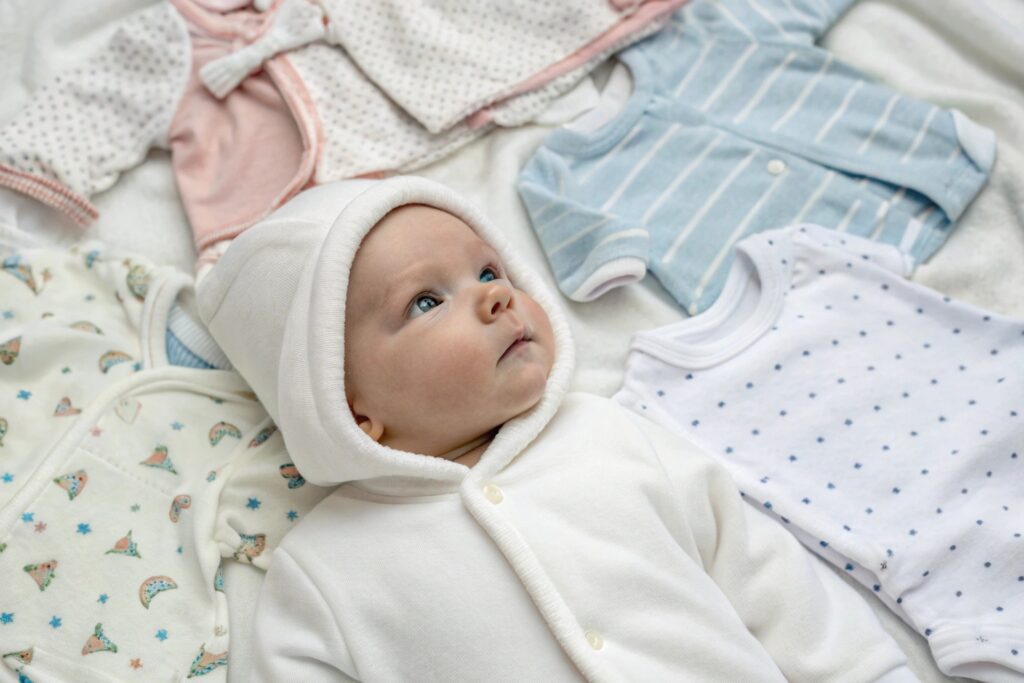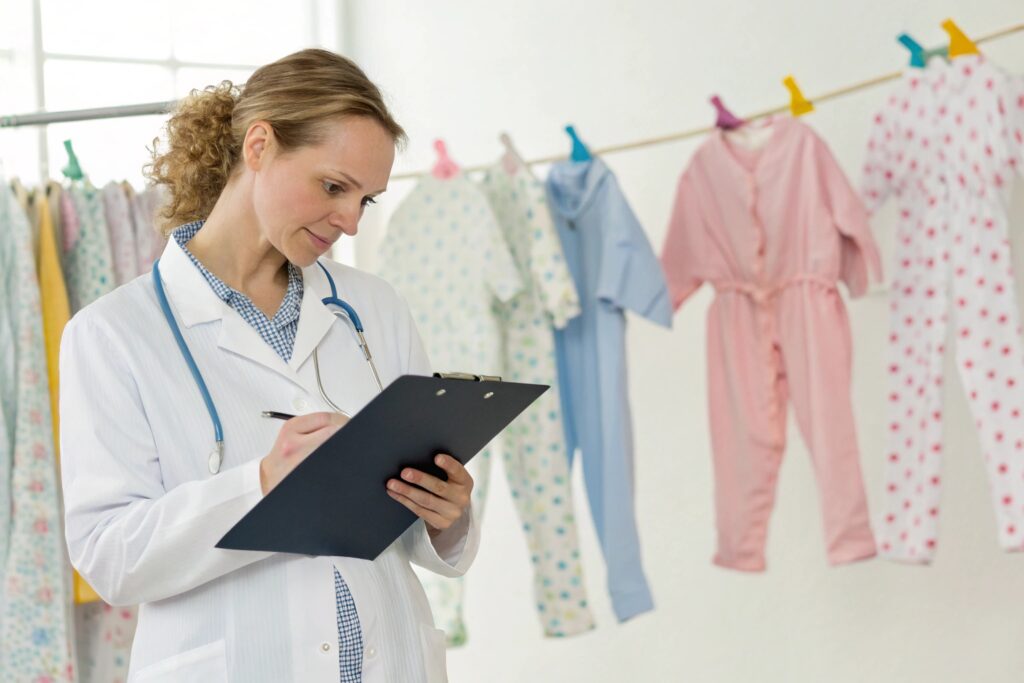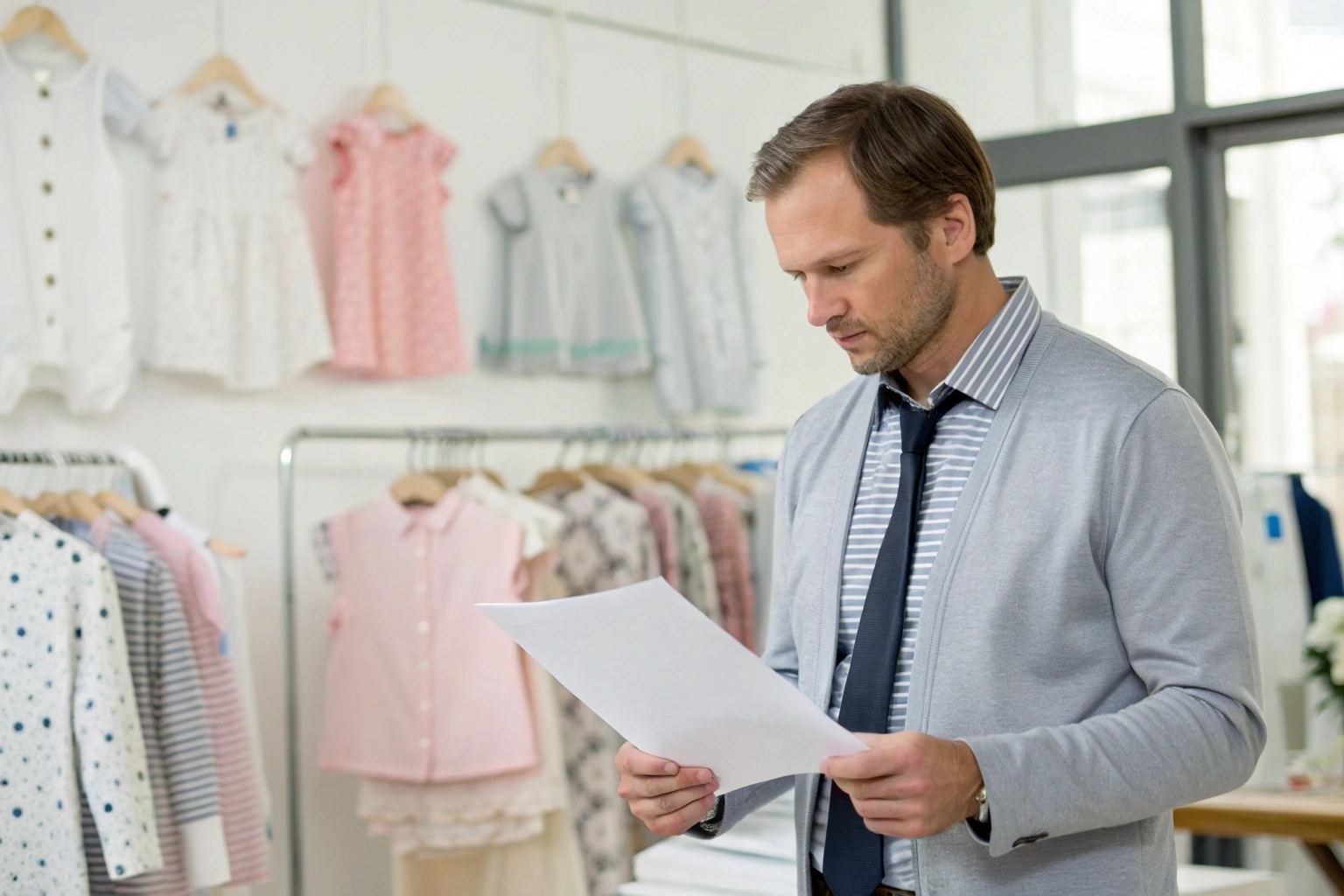In babywear, trust is everything. Parents want to know that every snap, seam, and fabric in their baby’s clothes is safe—and certifications are how you prove it.
Certifications in baby clothing production confirm that garments meet safety, chemical, and ethical standards—protecting babies, satisfying buyers, and opening global markets.
In this guide, I’ll explain why certifications aren’t just paperwork—they’re your brand’s ticket to trust, compliance, and long-term success.
What Certifications Are Required for Babywear Safety?
Making baby clothes isn't just about cute designs—it's about meeting legal safety standards that vary from country to country.
Key safety certifications like CPSIA, OEKO-TEX®, and EN 14682 are essential to ensure that babywear is free from choking hazards, harmful substances, and unsafe features.

What are the most important safety certifications for baby clothing?
Here’s a breakdown of the most required safety standards:
| Certification / Regulation | Region | Covers |
|---|---|---|
| CPSIA (Consumer Product Safety Improvement Act) | USA | Lead content, small parts, flammability, tracking labels |
| 16 CFR 1501 | USA | Prohibits hazardous small parts on kids' garments |
| EN 14682 | Europe | Bans drawstrings, cords on baby clothing |
| OEKO-TEX® Standard 100 | Global | Tests fabrics for harmful substances |
| ASTM Snap Test (F963 / F1816) | USA | Measures snap/button strength |
Failing to meet these standards could lead to customs rejections, product recalls, or worse—risking baby safety and brand reputation.
At Fumao, we help clients meet these from the first sample by using certified trims, fabrics, and layout templates with approved label positioning.
What documents prove compliance?
You’ll need:
- CPSIA General Certificate of Conformity (GCC)
- Third-party lab test reports (SGS, Intertek, TÜV)
- Tracking labels with batch info
- OEKO-TEX® fabric certificates (valid and recent)
We provide these in a compliance file with every shipment, helping our clients pass inspections in the U.S., EU, and beyond.
How Organic and Non-Toxic Labels Build Buyer Trust?
Today’s parents are more informed—and more cautious. They look for clothing that’s not only cute, but certified safe for their baby’s sensitive skin.
Organic and non-toxic certifications, like GOTS and OEKO-TEX®, help parents feel confident that your babywear won’t cause irritation, allergies, or harm.

What organic and non-toxic labels do parents recognize?
| Certification | What It Means |
|---|---|
| GOTS (Global Organic Textile Standard) | Organic fiber, eco dyes, fair labor |
| OEKO-TEX® Standard 100 | Free from over 100 harmful substances |
| USDA Organic | Organic farming certification (less common in apparel) |
| Bluesign® | Sustainable chemistry and production |
Parents trust brands that show the label, not just claim it. Displaying a certified badge on your product or packaging makes it easier to justify premium pricing—and increases conversions.
How do certifications influence sales?
- Organic-certified babywear commands 20–40% higher prices
- OEKO-TEX® labels improve return buyer rates due to comfort and safety perception
- Influencers, eco-conscious blogs, and retailers are more likely to feature certified products
- “Non-toxic,” “safe for newborns,” and “certified organic” are SEO keywords that help drive traffic
Many Fumao clients now request both OEKO-TEX® and GOTS certificates—not just for safety, but because buyers expect it. We provide the full documentation with batch numbers.
Why Third-Party Testing Matters in Infant Apparel?
In babywear, what you say must be proven. That’s where third-party testing comes in—to confirm safety, softness, and durability under objective standards.
Third-party lab testing ensures your babywear meets legal and quality requirements, offering proof to buyers, customs, and retailers.

What does third-party testing check in baby clothing?
We regularly submit samples to certified labs like SGS, Intertek, and TÜV, which test for:
| Test Type | What It Confirms |
|---|---|
| Snap/fastener strength | Prevents choking hazards |
| Seam strength | Durability and resistance to tearing |
| Color fastness (saliva/sweat) | Dye safety for babies who chew clothes |
| Shrinkage | Ensures sizing stays true after washing |
| Chemical content (formaldehyde, phthalates, azo dyes) | Confirms fabric is baby-safe |
These results form the backbone of your CPSIA GCC and other export documents. If you want to sell through Amazon, Target, or European baby stores, this proof is mandatory.
How often should you test?
We recommend:
- Once per new style or fabric
- Once per color batch or dye lot
- Before scaling any seasonal or promotional product
At Fumao, we handle all testing on your behalf and provide a folder with certifications, test reports, and photos to simplify your launch and customs clearance.
How Certifications Help Brands Enter Global Markets?
Different countries require different safety standards—and buyers often ask for certifications before they’ll even place an order.
Certifications unlock access to international retailers, distributors, marketplaces, and consumers who prioritize safety, ethics, and eco-consciousness.

What certifications are required in major global markets?
| Market | Required Certifications or Standards |
|---|---|
| USA | CPSIA, 16 CFR, ASTM, OEKO-TEX®, GOTS (optional) |
| EU | EN 14682, OEKO-TEX®, REACH, GOTS |
| Canada | CCPSA, flammability & label laws |
| Australia | AS/NZS standards, OEKO-TEX® accepted |
| Japan/Korea | Formaldehyde and chemical content tests |
Retailers and distributors often request:
- Proof of compliance with import regulations
- Certificates of fabric and factory safety
- Ethical audits like BSCI or SEDEX if working with baby boutiques or chain stores
With Fumao, our certified supply chain supports entry into North America, Europe, and other high-barrier markets. We’ve helped clients gain listings with international baby boutiques and eco-focused platforms.
What’s the ROI of certification?
It’s not just about safety—it’s about trust and access. Certified products:
- Open the door to new markets
- Command higher prices and margins
- Reduce the risk of return or legal issues
- Build long-term trust with parents and retailers
Your certificate is your silent salesperson.
Conclusion
Certifications in babywear are more than industry checkboxes—they’re proof of your care, quality, and commitment. From safety to global reach, getting certified gives your brand the credibility and trust it needs to grow with confidence.










